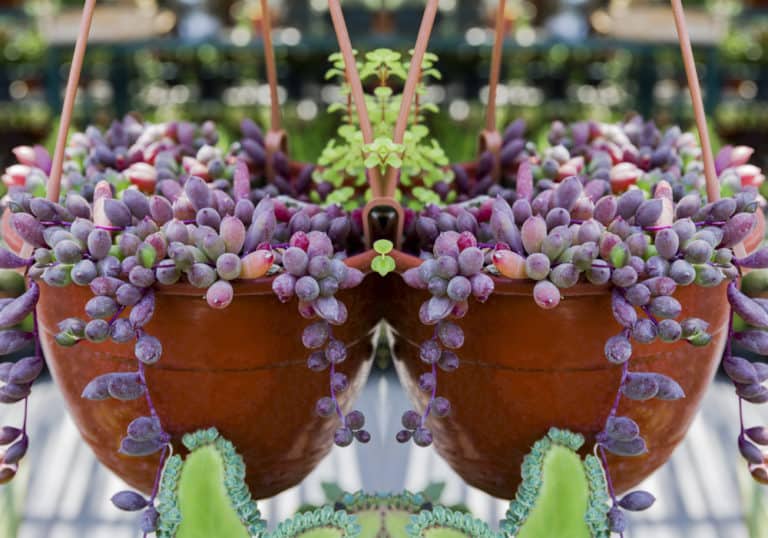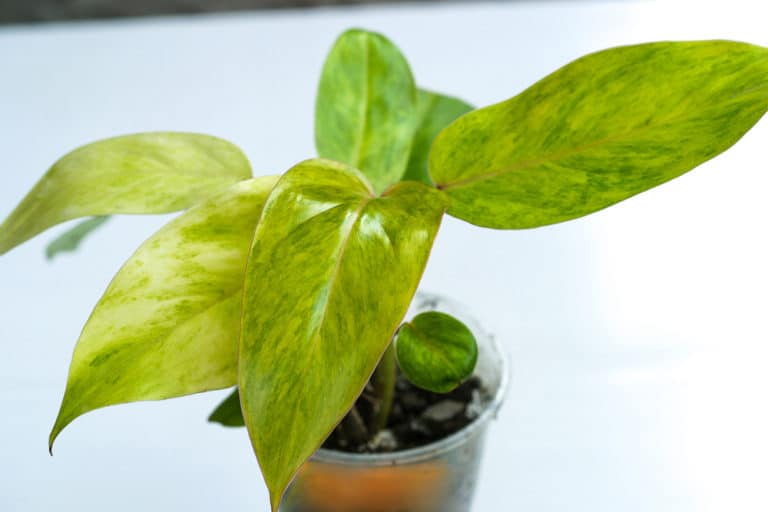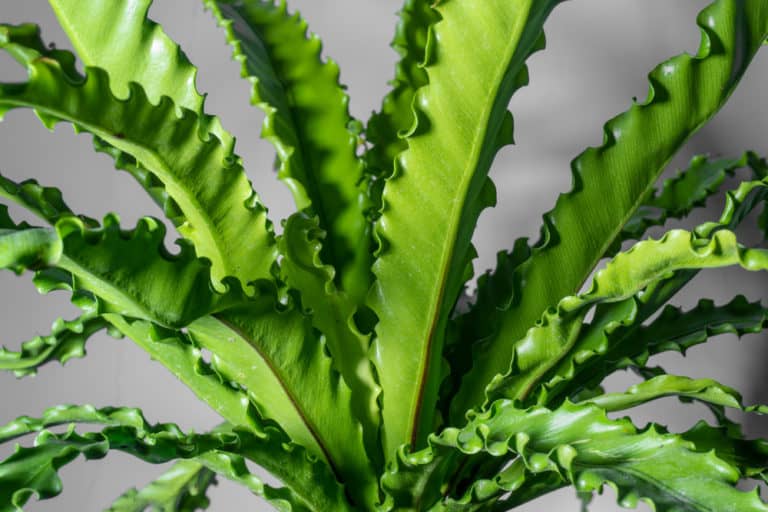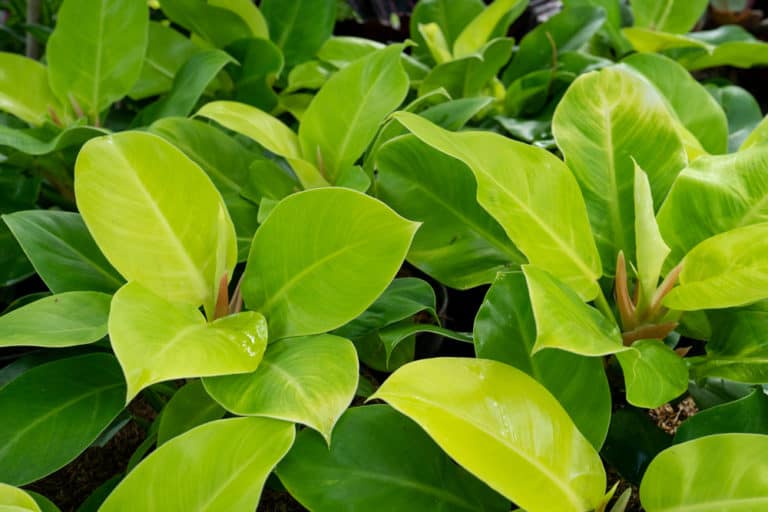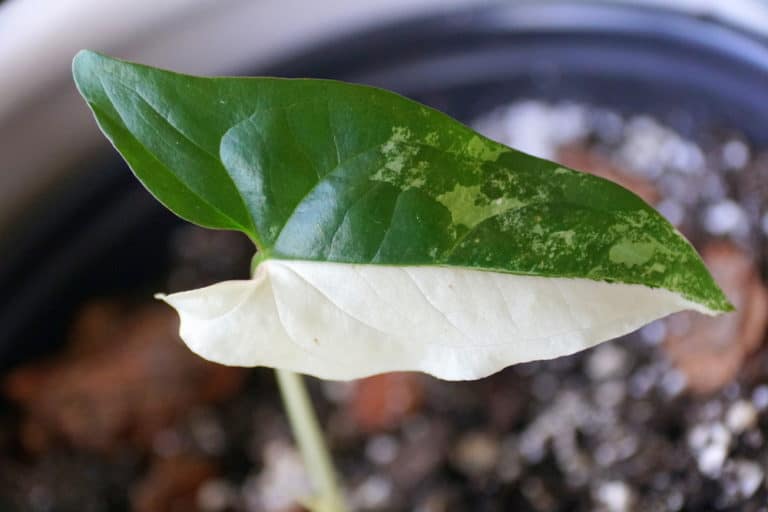Echeveria Lilacina ‘Ghost Echeveria’ Care Guide (2024)
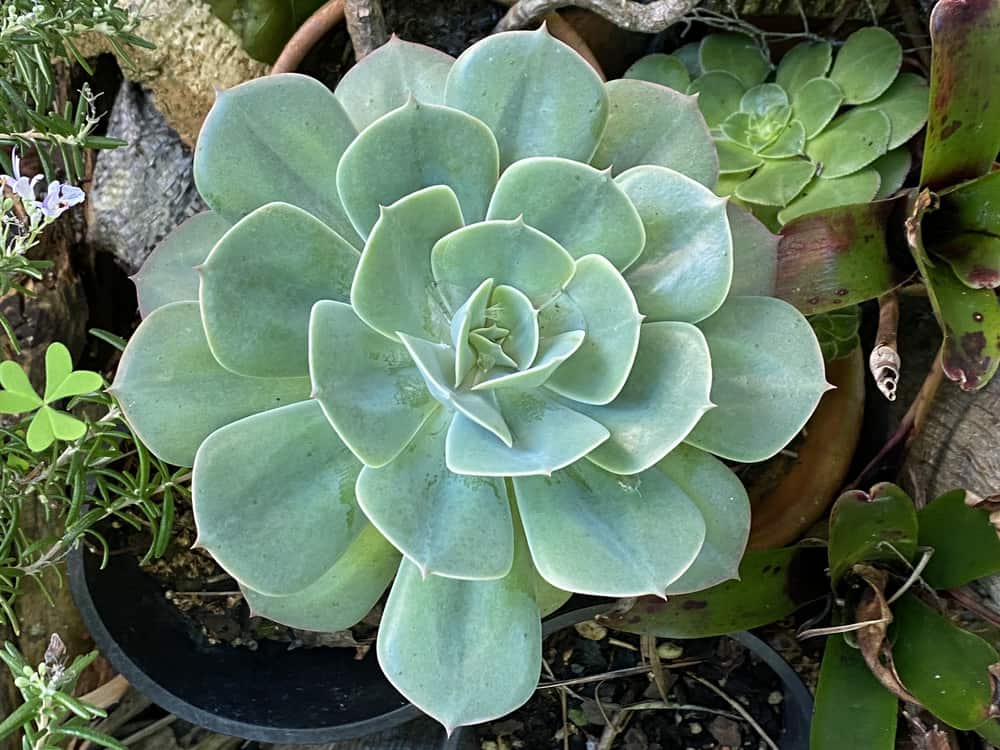
The Echeveria genus consists of a large number of adorable succulent species. Among them is the Echeveria lilacina that is a compact and slow-growing plant. It has a beautiful foliage with a shade of subtle lilac to grey-green. It’s a delightful treat to one’s eye.
Interested to know more? Keep reading.
Plant Profile
Common Name: Ghost Echeveria
Scientific Name: Echeveria lilacina
Type: Perennial succulent
Origin: Nuevo Leon in northern Mexico
Habitat: Rocky areas at quite high elevations
Size: 6 inches (15 cm) tall and 7 inches (17.5 cm) wide
Toxicity: Non-toxic to pets and humans
Colors: Subtle lilac to grey-green
Blooms: Pale pink to coral pink flowers from late winter to early spring
Plant Care
Light: Full sun or partial shade
Watering: Less watering
Temperature: 65 and 80°F (18-27°C)
USDA Zone: 9b to 11b
Air humidity: Low to medium
Soil pH: 6.1-7.8
Fertilizing: Fertilize during summer and spring with water-soluble fertilizer
Propagation: Leaves, cuttings, or seeds
Repotting: Repot every 2 to 3 years
Pruning: Prune dead leaves and spend flower stalks
What’s Unique About Echeveria lilacina?
If there’s one thing you’ll notice about the Echeveria lilacina succulent, it’s definitely the rosette and colored foliage. Most members of the Echeverias have the same form and shape. But they do differ in the hues of their leaves.
For this species, the subtle color of lilac to grey-green is what makes it distinct. This is the same reason why its specific epithet is called lilacina, derived from the term lilac. Echeveria lilacina’s common name is quite varied. To avoid getting confused, you must know the plant by its appearance.
Let us start by describing how this Ghost Echeveria looks.
Appearance
Like other Echeveria species, the Echeveria lilacina shape follows a rosette form. It’s a compact perennial succulent native to Nuevo Leon in Northern Mexico.
The Echeveria lilacina appearance can be deceiving. At first glance, the whole plant may look like a flower. Some even mistake it for a faux plant.
Foliage
The first thing you’ll notice about foliage of Echeveria lilacina is that it’s covered with a dusty coating that bears a tinge of lilac. Some even see it as a pink hue. Either way, such color makes the plant attractive enough to earn a second look.
The fleshy leaves have a pointed end. And they appear to be spoon-shaped stacked together to form rotation symmetry around a center point. The final look is a stunning Echeveria ghost succulent.
But more than its form and shape, the leaves are important reservoirs of water. This is the reason why they can last a long time even without watering.
Flowering
The flowers of Ghost Echeveria lilacina is another story to tell. If the foliage is stunning, the flowers are equally delightful. From late winter to early spring, you can expect the pale pink to coral pink flowers to appear.
Such flowers are held in clusters and they hang individually from a single stalk. Each rosette can produce one or more stalks of flower clusters. They certainly add beauty to the succulent plant. No wonder this Echeveria ghost captures the hearts of many.
Make sure not to miss the event of your Echeveria lilacina flowering. Or else, you’ll have to wait for another season.
Size and Growth
Not many succulents grow big and fast so expect the size of Echeveria lilacina to remain small and compact. Normally, the tallest it could get is around 6 inches (15 cm) in height and 7 inches (17.5 cm) in width. This size is just perfect for centerpieces of small tables.
If you’re concerned about the Echeveria lilacina growth rate, it has a slow growing habit. It will take its own sweet time to mature. This one is meant for the patient growers so be ready.
Nevertheless, the small size is a great advantage especially in moving the plant around.
Fragrance
There’s another special thing about your Echeveria lilacina plants. The flowers it produces are aromatic. They produce a notable smell that is quite pleasant to the nose. More than the beauty it possesses, this succulent has a fragrant scent. Clearly, the plant has more things to offer!
So, aren’t you excited to see your Echeveria lilacina blooming? We’re sure you are! But first give time for your succulent to grow and mature. Only then will it be competent to produce such aromatic clusters of flowers. Take note, it may take years of waiting.
Make sure to enjoy the Echeveria lilacina fragrance when you have the opportunity.
Toxicity
Worrying about toxic plants? Well, it’s okay to let your guard down when it comes to this Echeveria species. This succulent is safe for both pets and animals as they don’t contain harmful compounds.
Echeveria lilacina toxicity won’t be a serious problem that’ll concern you. So give yourself a deep breath now.
For Humans
Not only are Echeveria lilacina ghost plants easy to care for, they are also safe to handle. It’s okay to pinch off those fleshy leaves because they won’t emit any harmful substance. What you’ll get is just water. In fact, it’s very unlikely that your skin will get irritated unlike in other plants.
So, thank God, you have found a friendly succulent plant. Just make sure to handle this one with extra care. It has fragile leaves that can easily get damaged. Be gentle and keep it undisturbed as much as possible. Never let your kids play with the plant either.
For Pets
Care for Echeveria lilacina is made easier even if you have pets at home. Since it is non-toxic, your fur babies are safe even with this plant around. The plant won’t irritate your pets even if they happen to eat the leaves. But of course, we hope they won’t!
In fact, it is your succulent that needs protecting from your pets. Remember the leaves are fancy and it may catch the attention of your cats or dogs. To prevent them from messing with your Echeveria, make sure to keep it away. Tuck them safe in places where pets can’t reach.
Also, make sure to check out our in-depth Echeveria laui plant care guide.
Suggested Uses
Echeverias look their best when potted. A single rosette of this succulent is enough to lighten up a room. Much more when you have a collection of many Echeveria species in one stand. That will surely make a stunning corner.
They also do well when planted in the ground. Although, you have to elevate the place because it’s naturally used to rocky areas at quite high elevations. Pair them up with larger succulents to create a dynamic design.
Looking for a perfect office plant? This one definitely fits the bill. A pot of Echeveria lilacina will add life to a dull table.
Echeveria lilacina Care
The best part about Echeveria lilacina care is that it’s an easy to maintain one. You don’t have to spend so much time tending to it. As long as you provide the right growing conditions, this succulent will survive on its own.
Here are the basic requirements for this plant to thrive well.
Light
You can satisfy your Echeveria lilacina light requirements by providing plenty of sunlight. Preferably there’s full sun, if there’s available. Let it stay there for at least half of the day. Choose a well-lit area and avoid a completely shaded place. Lack of light could result in shedding off of leaves.
Partial shade is also allowed especially for indoor settings. Just make sure that there’s an artificial light source to supplement the limited sun rays passing through the windows. If you are to transfer the succulent from indoors to outdoors, do it gradually. Otherwise, the plant will suffer stress from heat shock.
Watering
The soak and dry method works best when it comes to watering of Echeveria lilacina. This plant could last long even without you watering. In fact, they’re better off that way. So don’t feel disappointed whenever you miss the watering schedule.
Just make sure that the soil is dry before watering again. That way, the roots are safe from incurring root rot. After soaking the soil, go check the pot’s saucer and make sure to drain any pooling water.
A twice a month watering routine should be enough for Echeveria. In winter, you can reduce this to just once a month.
Temperature
The next thing you have to watch out for is the temperature. Most succulents love a warm environment and are not quite hardy during winter. The best Echeveria lilacina temperature range is within 65 and 80°F (18-27°C).
Normally, a little frost won’t hurt. But if the cold weather persists for a longer period, the leaves can get damaged. It’s advisable that you move your succulent away from the window during the night. This is when the temperature drops lower.
Always avoid placing your houseplant near drafty places like air conditions, heaters, or windy locations. Such conditions could stress your plant.
Air Humidity
Do you own a hygrometer at home? That’s good especially if you have numerous houseplants inside your home. This helps monitor the temperature and humidity levels. That way it’ll be easier for you to know the prevailing conditions surrounding your plants.
Echeveria lilacina humidity needs to be low to medium. This succulent loves to be on the dry side. With excess moisture, they can easily develop pathogen diseases. That’s why it’s important that the environment where it’s placed isn’t always moist. Avoid spraying water directly on the foliage. And keep this plant away from your humidifiers.
The drier the condition is, the better.
Soil
Succulents have a shallow root system so they only need a few soil and a small container. You can pot them in a soilless potting mix. What’s important to consider in Echeveria lilacina soil is that it must be well-draining with a soil pH of 6.1-7.8.
Whether you’re buying a commercial mix or creating your own, remember to sterilize. This process kills the pathogens that are present in the medium. Thus, we can prevent the occurrence of diseases in the future.
Test the drainage of the mix by pouring water on it. A good mix should drain water within a few minutes.
Fertilizing
In growing Echeveria lilacina, fertilizer isn’t much of a requirement. This plant isn’t a heavy feeder and it can grow even if the soil isn’t that fertile. If your succulent is healthy and vigorous in appearance, you can skip the application of fertilizer.
But if you prefer to fertilize, that’s totally okay. However, you must do this during the growing season only, summer and spring. Use a water-soluble fertilizer. Dilute it to ¼ of its original recommendation. Then, apply it once or twice a month depending on the need.
Commercial fertilizers, though, can cause salt build up in the soil in the long run. So make sure to drench the potting medium occasionally.
Propagation
Leaves, cuttings, or seeds are the way for the propagation of Echeveria lilacina. You can detach the mature leaves and lay them flat on a growing medium. Spray water from time to time but not too much. In time, these leaves will develop their own roots.
The Echeveria lilacina plant produces offshoots which you can detach and plant separately. These small rosettes are capable of standing on their own once separated from the mother plant. Using seeds is also another method. But this one takes time so most growers choose to do vegetative propagation. You can use whatever technique you prefer as a gardener.
Repotting
If you are repotting Echeveria lilacina now, expect that the next repotting schedule will be after 2 to 3 years. Yes! This succulent will not easily outgrow its pot. And the roots will most likely remain shallow. Thus, it prefers to be a little root bound so it can better support itself.
The purpose of repotting is to replenish the depleted potting mix and give enough breathing room for the growing roots. For Echeverias, however, avoid using large containers. A pot that’s one size larger should be enough.
Always opt for a pot that has enough drainage holes. If none, make sure to drill at the bottom.
Pruning
The only thing involved in pruning Echeveria lilacina is the removal of diseased, and dead leaves or flower stalks. You can simply pinch them off using your fingers and they would easily detach. They are normally fragile so you wouldn’t have trouble removing them.
Be careful in disposing of diseased leaves. Don’t mix them up with healthy plants as they may spread and infect them. Seal them in a plastic bag before you throw them in the trash can.
Other than that, there are no pruning activities to do on your Echeveria. So, this is going to be an easy job on your part.
Echeveria lilacina Common Problems
Now that you’ve learned the basic things this plant needs to grow, let’s move on to the more serious aspect. There are some Echeveria lilacina problems that you’ll encounter. Since you’re dealing with a living organism, this plant isn’t exempted from stress and disease.
Below are the common causes:
Pests
The typical Echeveria lilacina pests that you’ll encounter are the mealybugs and spider mites. They are tiny organisms that find residence in houseplants to look for supply of food. They normally suck the plant’s juices leaving the surface with lesions and brown spots.
Luckily for Echeverias, the powdery coating known as farina serves as a layer of protection. That way, these pests are prevented from creating huge damage to the plant. This is the reason why there’s less occurrence of pest infestation in most succulents.
Nevertheless, don’t play complacent. Always check on your Echeveria for the presence of harmful organisms.
Diseases
Fungal diseases and bacterial infections are examples of Echeveria lilacina diseases. They are normally a product of too much watering and excess moisture. The rotting portions in the roots and stems are the visible signs of a disease. That’s why we want to keep our succulents dry as much as possible.
You can manage these diseases by removing the affected portions. Repotting also helps to save plants suffering from root rot. If the damage is severe, discarding the plant is the best option. Fungicide treatment is also recommended.
Above all, providing your Echeveria with the ideal growing condition is the way to prevent diseases.
Growing Problems
It’s easy to grow Echeveria lilacina even if you’re a beginner. Aside from requiring less maintenance, the plant isn’t easily destroyed by stressful conditions unless it involves overwatering and high humidity. These two can easily kill any succulent so you must be very careful.
Don’t be surprised if the plant takes time to grow. It’s quite natural for Echeverias to spend years to reach maturity. It doesn’t necessarily mean that your succulent isn’t vigorous. As long as you’re providing the best growing conditions, your Echeveria lilacina is best to go. It will reward you with its attractive foliage and flowers in time.
FAQ
How do you care for Echeveria lilacina?
Provide plenty of light, less water, less humidity and warm temperature. These things are important to help the Echeveria thrive. Strive to provide the best growing condition possible.
How do you water Echeveria lilacina?
To avoid the perils of overwatering, follow the soak and dry method. Let the potting mix dry before watering again. Make sure to saturate the soil and drain it well.
Is Echeveria lilacina toxic to pets?
No. Luckily, the Echeveria lilacina is safe for your furbabies. It doesn’t contain any harmful substances that could intoxicate your pets. A pet-friendly plant indeed.
How to grow Echeveria lilacina indoors?
Find the brightest location that has low humidity in your home. Your succulent will love such a place. Keep it warm and dry most of the time.
How do you propagate Echeveria lilacina?
Leaf cuttings and offshoots are the easiest way to propagate this succulent. But you can always start Echeveria lilacina seeds if that’s the one available.
Does Echeveria lilacina need sun?
Yes, it does. Those gorgeous leaves need plenty of sunlight. It prefers to have exposure to full sunlight. Low light conditions aren’t ideal for this succulent.

